Er was een tijd dat ik schreef voor de internationale cinephile website ‘Taste of Cinema.’ Een website met een gigantisch bereik, waar ik de kans kreeg om mijn film meningen de wereld in te gooien in de vorm van top 10 lijstjes. Nu is het al een hele tijd geleden dat ik de laatste schreef, maar ik kan het niet laten om er een aantal waar ik toendertijd erg tevreden mee was opnieuw te delen. Zie hier in het Engels geschreven een van deze top 10 lijstjes.
De andere twee vind je hier: 10 great spaghetti westerns, 10 great surrealist films.
De andere twee vind je hier: 10 great spaghetti westerns, 10 great surrealist films.
10 Great Fantasy Films
(you’ve probably never seen)

As the last example proves; the genre can change the course of cinema, because obviously some of these new worlds need to be experienced in new ways so that we can fully emerge in them. This is also why animation is such a great medium to tell fantasy stories on, because the possibilities are endless.
The examples above are obviously all well-known already, but lots of great fantasy films don’t have this privilege. Without further ado, presenting 10 of them, in this list of 10 great fantasy films no one talks about.
1. Faust (1994)
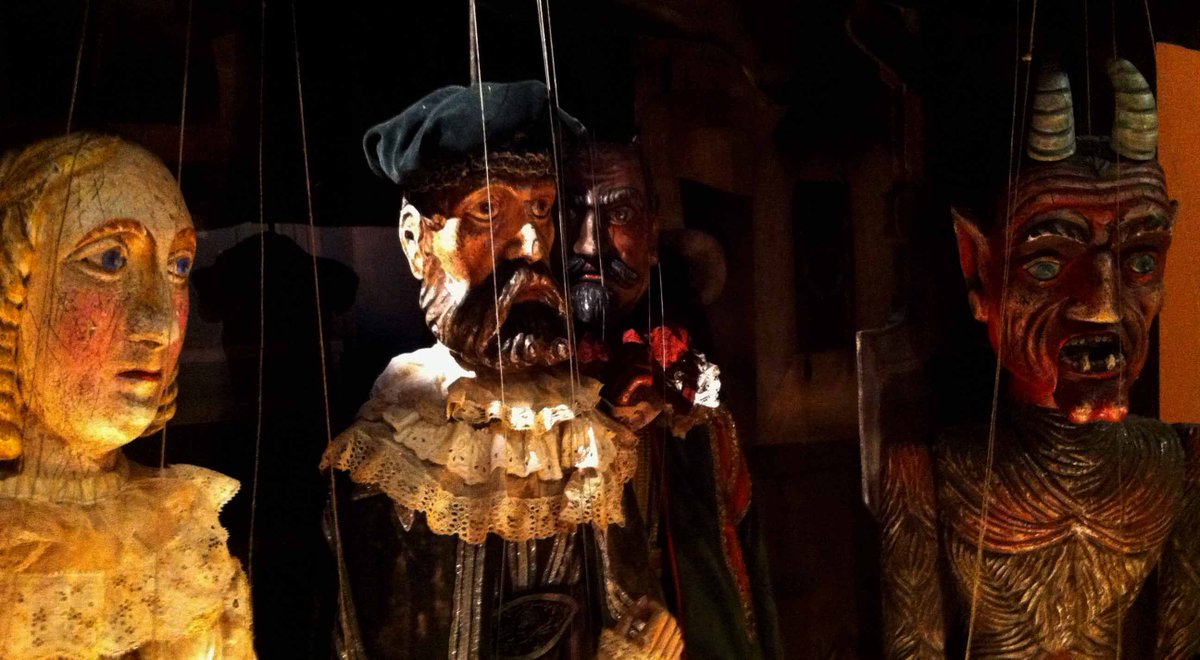
Jan Svankmajer’s Faust is a very loose adaptation of the Doctor Faustus legend that mainly takes inspiration of Marlowe’s Doctor Faustus and Goethe’s Faust. The legend of a man selling his soul to the devil is seen in many different interpretations, but Svankmajer’s Faust might as well be the most unique one. This mostly thanks to Svankmajer his distinct personal style; combining live-action, stop-motion, claymation, and puppetry. In Svankmajer’s adaptation the character Faust follows a treasure map that lures him into a lurid puppet theatre. Here he finds himself a performer of the play.
No list about fantasy films is complete with at least one of the works of Svankmajer. Besides making some incredible films like Alice, Little Otik, Food, and Conspirators of Pleasure, he has a great career in fine arts as well. The artist and filmmaker has a legacy that inspired some of the most unique voices working in the film industry today. From Terry Gilliam to the Quay brothers, and from Tim Burton to Edgar Wright. Diving into Svankmajer’s filmography is a nice way to see where some of these established names got their inspiration from.
2. Orfeu Negro (1959)
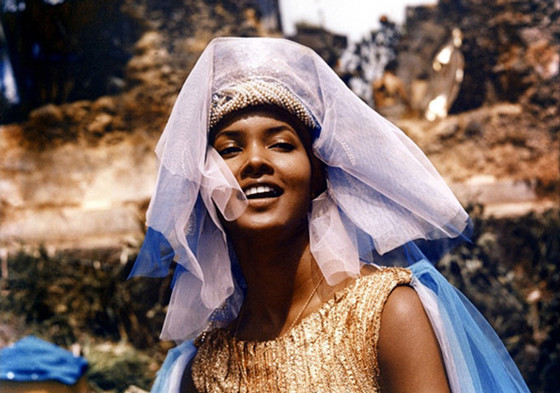
It’s Carnival week in Rio de Janeiro, Brazil. Guitarist Orfeo and his fiancé Mira are preparing for the grand festival and together with friend Sarafina they put the last touches on their costumes. Life for Orfeo changes when Sarafina’s cousin, Eurydice, comes to Rio to flee her village and the mysterious reincarnation of Death that’s trying to hunt her. Orfeo and Eurydice fall in love at first sight, since it’s meant to be, but Mira quickly becomes suspicious and is filled with jealousy. Not only is Eurydice in danger of being caught by an enraged Mira, but also by Death whom has followed her to Rio.
Black Orpheus is French director Marcel Camus his retelling of the play Orfeu da Conceição by Vinicius de Moraes, which itself is based on the Greek legend of Orpheus and Eurydice. The film is set in Morro da Babilônia, a favela in Rio and is most famous for its music by Antônio Carlos Jobim and Luiz Bonfá which introduced the world to Bossa Nova. Although big names like Bong Joon-ho have cited the film as a big influence, it’s reach as a classic hasn’t quite hit a bigger audience, even though it definitely deserves one.
3. Blancanieves (2012)
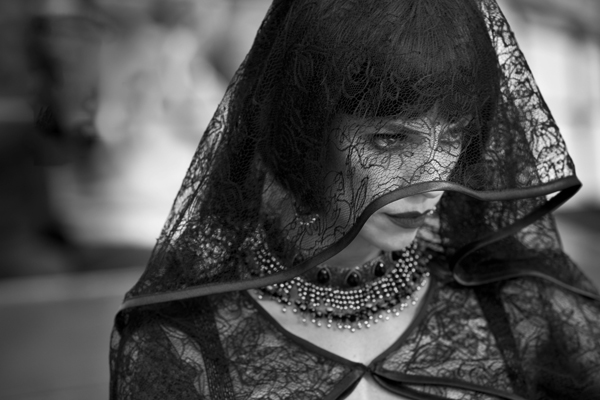 On the day Carmen is born, her father Antonio, a famous Spanish Matador, has a work-related accident landing him in the hospital and not long after, her mother dies while giving birth to her. Antonio soon remarries the nurse that treated him, the evil Encarna, and Carmen is mostly left being raised by her grandmother. Later in life Carmen is treated like a slave to Encarna, who’s evil deeds are taking a toll on her. After things go too far and Encarna wants to kill Carmen, she decides to run away, ending up in the woods in the company of a band of bull-fighting dwarfs.
On the day Carmen is born, her father Antonio, a famous Spanish Matador, has a work-related accident landing him in the hospital and not long after, her mother dies while giving birth to her. Antonio soon remarries the nurse that treated him, the evil Encarna, and Carmen is mostly left being raised by her grandmother. Later in life Carmen is treated like a slave to Encarna, who’s evil deeds are taking a toll on her. After things go too far and Encarna wants to kill Carmen, she decides to run away, ending up in the woods in the company of a band of bull-fighting dwarfs.Sounds familiar? That’s because Blancanieves is a retelling of the fairy tale ‘Snowwhite.’ It’s a romanticized Spanish tale set in the 1920s in Seville, Spain. What makes it even more interesting is the style of the film, as it is a black-and-white silent film, meant as a love letter to the silent film era of Europe. It’s quite the shame that this little film was overshadowed by ‘The Artist’ that came out a year earlier, because this is arguably just as good if not better. Hopefully Blancanieves will find its wider audience still as it deserves much more buzz around it than it initially did.
4. Grass Labyrinth (1979)

Shūji Terayama is viewed as one of the most provocative artists that came out of Japan. He has influential creative works in countless of disciplines including literature, radio, tv, theater, and film. In film he’s best known for his surreal features: ‘Throw away your books, rally in the streets’ and ‘Pastoral.’ Besides these two incredible films he made a bunch more features and shorts; Grass Labyrinth being one of the latter, although with 40 minutes in length it’s not that short at all.
Grass Labyrinth follows a young man, Akira, that is determined to find the words to a song that his mother used to sing to him. As he’s now on the verge of adulthood, he’d like to close the chapter that is his childhood by finding the meaning of the song. On his search Akira goes into a time-warp that merges aspects from both his childhood and his adulthood, bringing him to an imaginary world, housing the labyrinth of time. With surrealist imagery and metaphor after metaphor, the film is an experience that pulls you in and doesn’t let you go even after it ends, since you’ll still be pondering over its meaning. It might be Terayama at his best, but with a body of work like his, it has some stiff competition that is all worth it to check out.
5. The Boxer’s Omen (1983)
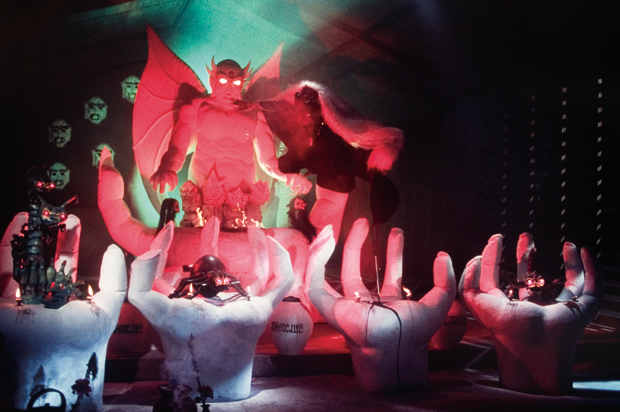 When Zhen Wei, a Hong Kong boxer, gets injured when his Thai opponent plays dirty, his brother Zhen Xiong will avenge him. Meanwhile he also has to find a way to break the ancient curse that looms over their family name. He does this by traveling to Thailand, where he gets involved in black magic and Buddhism. On his journey he will encounter fantastical adventures involving wizards, monks, and all sorts of monsters, all out there to thwart his plans.
When Zhen Wei, a Hong Kong boxer, gets injured when his Thai opponent plays dirty, his brother Zhen Xiong will avenge him. Meanwhile he also has to find a way to break the ancient curse that looms over their family name. He does this by traveling to Thailand, where he gets involved in black magic and Buddhism. On his journey he will encounter fantastical adventures involving wizards, monks, and all sorts of monsters, all out there to thwart his plans.Kue Chih-Hung was one of the most popular directors working for the Shaw Brothers studios and his film ‘The Boxer’s Omen’ might be his best-known work. It might even be one of the best-known works coming from the Shaw Brother studios. But even so, there’s not much buzz around it, is there? Even though people definitely know about the film, it feels like its bonkers plot should be the subject of more film conversations. We probably should all take the time to get the buzz going by introducing the film to our friends and make a movie night out of it, since this film is best experienced together.
6. Beauty and the Beast (1946)

The second fairytale in this list needs no plot explaining. Jean Cocteau’s rendition of Beauty and the Beast is a classic of French cinema for many reasons, but could as well be alone for Cocteau’s touching message at the beginning of the film that directs itself to the viewer; asking them for childlike imagination. After this heartfelt message, the viewer gets to experience the fairytale like never done before and after; this especially thanks to the fantastically surreal set-design and costume-design. And not only is it a feast for the eyes, it’s also filled with layers of subtext.
Jean Cocteau’s masterpiece might be talked about, but not nearly as much as a number of other Beauty and the Beast adaptation, even though this is arguably the most magical one. This is the one that everyone should see and the one that everyone really should talk about.
7. Tumbbad (2018)
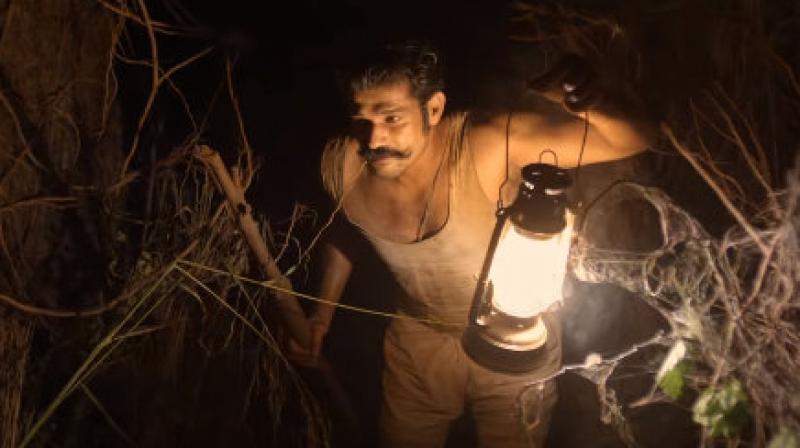
Tumbbad starts out with Vinayak Rao (Sohum Shah) telling his son the story about Hastar, the greedy son of Pandurang, goddess of prosperity. He explains Hastar was exiled and erased from all history by Pandurang after he stole her unlimited wealth and attempted to steal her unlimited food. Hastar was cursed to be forever hungry and now sleeps for eternity in his mother’s womb: Earth.
As a kid Vinayak lived in Tumbbad, were his mother served a lord and his great grandmother (somewhat of a monster herself). From her, Vinayak learns the location of Hastar and his treasure of unlimited gold. Having grown up Vinayak occasionally visits Hastar to steal gold coins from this unlimited treasure.
Rahi Anil Barve his directorial debut is beautiful yet terrifying. The world that’s created seems such a new step for Hindi cinema. The setting can be compared to the great 2020 released Bulbbul, but arguably Tumbbad did it better. The visual aspects from design of the monsters, to use of colors all work perfectly together to make us believe in the folklore displayed. It’s not only a beautiful film to look at, but also one of the more eerie, fear-inducing films from recent years. Hopefully films like Tumbbad and Bulbbul are the start of a new trend of Indian cinema.
8. Blacula (1972)

Transylvania, it’s 1780. African prince Mamuwalde and his wife meet with Count Dracula for a dinner in his castle. Soon Mamuwalde and his wife turn out to be the meal and Dracula turns Mamuwalde into a vampire and curses him with the name ‘Blacula’ while imprisoning him into a tomb.
200 years later, in 1972, goods from the Count his castle are sold and shipped to Los Angeles. When the buyers open the tomb, Blacula is awakened and attacks them. He leaves for LA and roams the city thirsty for blood until he meets a woman that resembles his wife.
After ‘The Thing with Two Heads’ Blacula is the second Blaxploitation film diving into the horror genre and the first tackling the fantasy genre. Quickly similar retellings spawned, like ‘Blackenstein’ and the highly acclaimed ‘Ganja & Hess,’ but for this list Blacula felt like the appropriate choice. Not only is Blacula an important cultural mark in cinema history, but it’s also just a really entertaining film. It knows exactly what it’s doing and still manages to combine goofy fun with a very interesting theme. Not only the horror or fantasy will stand out, but surprisingly the romantic touch of it all will leave you surprised.
9. The Adventures of Baron Munchausen (1988)

Terry Gilliam’s filmography is filled with fantasy stories that are often goofy yet magical. Probably the clearest example of this is Monthy Python’s Holy Grail, but films like Brazil, Time Bandits, The Brothers Grimm, and Gilliam’s rendition of Don Quixote all suffice. This entry though, is reserved for maybe his goofiest film of all.
In the eighteenth Century, a town is being attacked by the Turks. Meanwhile, in a small theater, the play ‘The Adventures of Baron Munchausen’ is being performed. During the play a confused old man rushes onto the podium, claiming he is the real Baron Munchausen and that he is the one that is responsible for the Turkish attack. In a fantastical manner he tells the audience his plan for dealing with this attack. His plan involves his trusted servants, each with their own strange attribute, which he must find using a home-built balloon. First stop: the moon.
Gilliam is at his best when including the bizarre and surreal in his films, this one being no exception. Although it was nominated for four Oscars, the initial audience reception wasn’t a success, which remains a shame. It’s definitely a film to revisit with the family, or one to explore if you haven’t seen it already.
10. Wizards (1977)
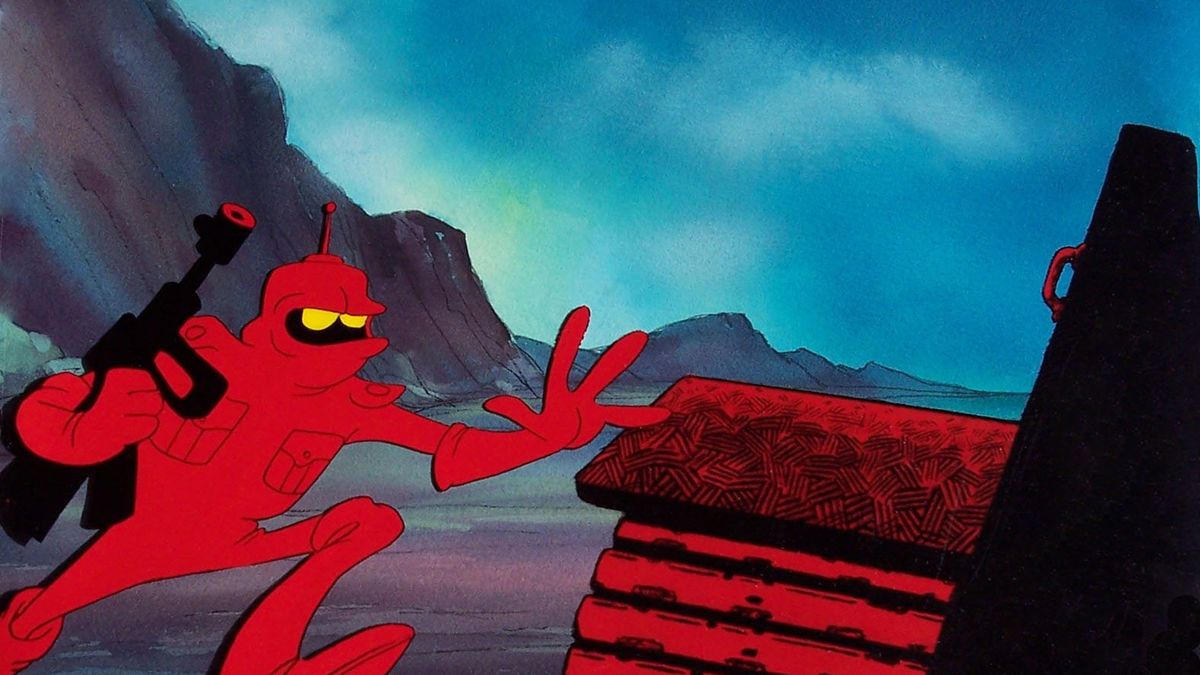
The evil mutant-wizard Blackwolf wants to claim the throne of his dead mother by using some lost military technologies and with it overtake the world. His twin brother, the sage Avatar, assembles his team in order to defeat Blackwolf and his evil forces. The storyline of Wizards is a prime example of good versus evil, but thanks to the unique-looking post-apocalyptic setting and absurd stylistic choices and imagery, it’s a one of a kind animation film.
Wizards is Ralph Bakshi’s at his craziest. It switches between animation techniques seamlessly and showcases beautiful psychedelic and impressionistic imagery throughout, all the while telling a politically charged story. Bakshi’s vision always makes for the most fantastic, surreal worlds. His adult animation films including Coonskin, Fritz the Cat and The Lord of the Rings are all like none other animation film out there, but still each of them is highly overlooked and underrated. It’s films like these that you would suspect to have a large cult following, but even though there is a following, it’s not anywhere near as large as it should be.